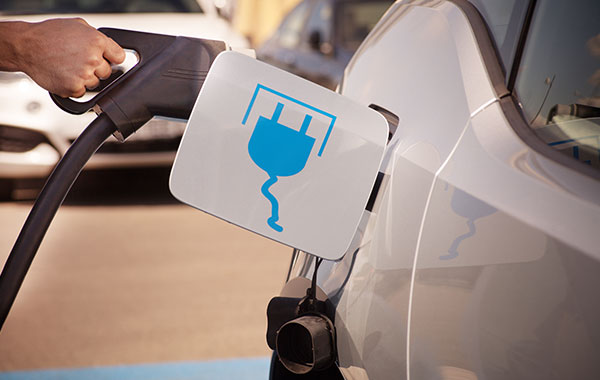E-cars continue to decline: Political solutions instead of fines

A total of 231,992 new passenger cars were registered in Germany in October, 121,553 of which had alternative drive systems (purely electric, hybrids with and without plugs and gas-powered). The market for passenger cars with alternative drive systems is therefore up 8.1% compared to the same month last year. The share of new registrations with alternative drive systems rose to 52.4% in October, up from 51.3% in October 2023. 1,086,988 new vehicles with alternative drive systems rolled onto the roads between January and October. This corresponds to a decrease of 3.4% compared to the same period last year. In the first ten months of 2024, the share of alternative drive systems reached 46.3% after 47.7% in the same period in 2023.
New registrations of purely battery electric passenger cars (BEV) fell by 4.9% to 35,491 units in October. The BEV share of total new passenger car registrations reached 15.3%. By comparison, the BEV market share in October 2023 was 17.1%. Since the beginning of 2024, a total of 311,881 BEVs (-26.6%) have been newly registered, accounting for 13.3% of new passenger car registrations.
“The CO2 fleet limits planned for 2025 are based on assumptions about the development of electromobility that have not materialized. Compliance with them is largely determined by factors that are clearly the responsibility of politicians, such as the lack of a nationwide charging infrastructure and the stimulation of the market for electric vehicles. With around 200 battery electric vehicles, international vehicle manufacturers have already created a broad range. In order to enable further investment in electromobility, manufacturers should therefore not be subject to high penalties in 2025. At EU level, the VDIK is also once again calling for a significantly faster review of the CO2 standards for light and heavy commercial vehicles in order to ensure the competitiveness of the automotive industry. Plug-in hybrids are a sensible bridge to electromobility. It is therefore gratifying that more and more customers are currently opting for this type of drive,” says VDIK President André Schmidt.
New registrations of vehicles with plug-in hybrid drive (PHEV) recorded a significant increase in October. 19,337 PHEVs rolled onto the roads, 18.2% more than in the same month last year. The share of all new passenger car registrations rose to 8.3% (October 2023: 7.5%), which corresponds to the highest PHEV market share since the end of the purchase subsidy for plug-in hybrids at the end of 2022. Between January and October 2024, 152,198 PHEVs were newly registered, which is 8.9% more than in the first ten months of 2023.
Together, electric vehicles (BEVs, plug-in hybrids and fuel cell vehicles) therefore had a market share of 23.6% in October with 54,828 new registrations. This corresponds to an increase of 2.1% compared to October last year. Since the beginning of the year, the market for electric vehicles has fallen by 17.8%. In the first ten months, 464,113 new electric vehicles were registered. The share of the total passenger car market was therefore 19.8%.
The VDIK regularly updates the list of electric vehicles of its member companies. The VDIK electric list can be accessed here.
Hybrid vehicles without plugs achieved an increase of 14.1 percent in October. 65,672 new registrations correspond to a 28.3 percent share of passenger car registrations (October 2023: 26.3 percent). In the first ten months of 2024, hybrid vehicles without plugs increased by 11.4% to 610,973 new registrations, taking their share to 26.0% (January-October 2023: 23.3%).
In addition, 1,039 LPG passenger cars (-4.6%) rolled onto the roads in October. Since the beginning of the year, around 6.8% more LPG passenger cars have been newly registered than in the same period last year.
New registrations of combustion passenger cars reached 110,436 units in October, of which 74,264 were petrol (+3.6 percent) and 36,172 diesel (+3.7 percent). The share of petrol cars in passenger car registrations was 32.0 percent, while diesel cars accounted for 15.6 percent. Since the beginning of the year, 845,263 petrol cars (+2.8 percent) and 415,720 diesel cars (+1.5 percent) have been newly registered.
| October | January – October | |||||||
|---|---|---|---|---|---|---|---|---|
| +/- (%) | Share of total car market | +/- (%) | Share of total car market | |||||
| BEV | -4,9 | 15,3 | -26,6 | 13,3 | ||||
| PHEV | 18,2 | 8,3 | 8,9 | 6,5 | ||||
| FCEV | 0 | -100,0 | 0,0 | 34 | -86,7 | 0,0 | ||
| Electric Vehicles (total) | 2,1 | 23,6 | -17,8 | 19,8 | ||||
| HEV including: |
14,1 | 28,3 | 11,4 | 26,0 | ||||
| full hybrid | 49,1 | 5,3 | 32,7 | 4,4 | ||||
| mild hybrid | 8,2 | 23,0 | 7,8 | 21,6 | ||||
| CNG | 0 | -100,0 | 0,0 | 137 | -89,1 | 0,0 | ||
| LPG | -4,6 | 0,4 | 6,8 | 0,5 | ||||
| Alternative Drivetrains (total) | 8,1 | 52,4 | -3,4 | 46,3 | ||||
| Petrol | 3,6 | 32,0 | 2,8 | 36,0 | ||||
| Diesel | 3,7 | 15,6 | 1,5 | 17,7 | ||||
| Passenger car (total) | 6,0 | -0,4 | ||||||
Glossary:
Electric vehicles: BEV, PHEV und FCEV
BEV, Batterieelektrisches Fahrzeug, engl: Battery Electric Vehicle
PHEV, Plug-In-Hybrid, engl: Plug-In Hybrid Electric Vehicle
FCEV, Brennstoffzellenfahrzeug / Wasserstofffahrzeug, engl.: Fuel Cell Electric Vehicle
Hybride, Hybrid ohne Stecker bzw. nicht aufladbar, engl.: Hybrid Electric Vehicle
CNG, Gasförmiges Erdgas, engl: Compressed Natural Gas
LPG, Flüssiggas bzw. Autogas, engl: Liquified Petroleum Gas
Models with a maximum e-motor output of 20 KW are classified as mild hybrids, while full hybrids have a maximum e-motor output of more than 20 KW.